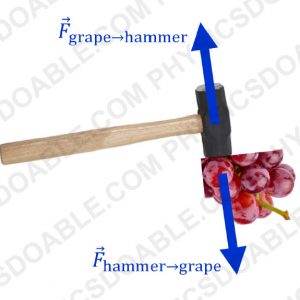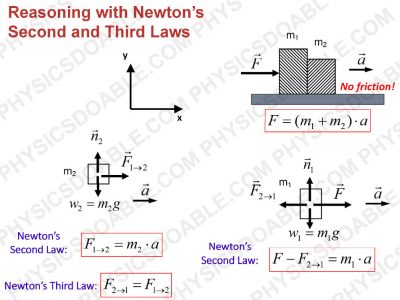Q: This is a conceptual question I have wondered since high school but never asked. If every force has an equal and opposite reaction, then how come a sledgehammer is easily able to crush a grape? Going off of Newton’s third law, shouldn’t we expect to see the grape push back with just as much force as the sledge hammer did?
In the same vein, why are we able to move our hands through the air? If moving our body counts as a force, shouldn’t there be an equal and opposite reaction that keeps us suspended and unable to move?
I know the question may seem silly but I thought it was interesting. Thank you for sparking my interest in physics.
A: Your questions are not silly at all. In fact, they are interesting, but commonly confusing!
Newton’s third law tells us every force has a reaction partner with the equal magnitude and the opposite direction. These two forces in a pair are acting on each other. In the example of a sledgehammer and a grape (see the picture), the action force is exerted by the hammer (the agent) on the grape (the receiver), while the reaction force is exerted by the grape (the agent) on the hammer (the receiver). The former force is significant for the grape, but the latter force is mild for the hammer.


When study the motion of an object, we should identify all the force acting on the object and then apply Newton’s second law. That is why in a Free-Body diagram, we only indicate all the forces that the object receives (the object is the receiver!) without showing any forces that the object exerts on others (the object is the agent!). If we have more than one objects, we need to make one diagram for each object! Also refer to the picture!
In the example of hand and air, again when study the motion of hand, only consider the forces that the hand receives. We should not sum the forces that the hand receives with the forces that the hand exerts on others (like the air).
I wish I have clarified your confusion. I am happy to hear I have sparked your interest in Physics:)
